Onion Bhaji
Onion Bhaji are easy to make at home with none of the stodginess found in most supermarket versions. Mine have a very light batter so that the taste of the onions and spices come through. In this post I’ll also tell you about a simple step to ensure your bhaji always turns out perfectly.
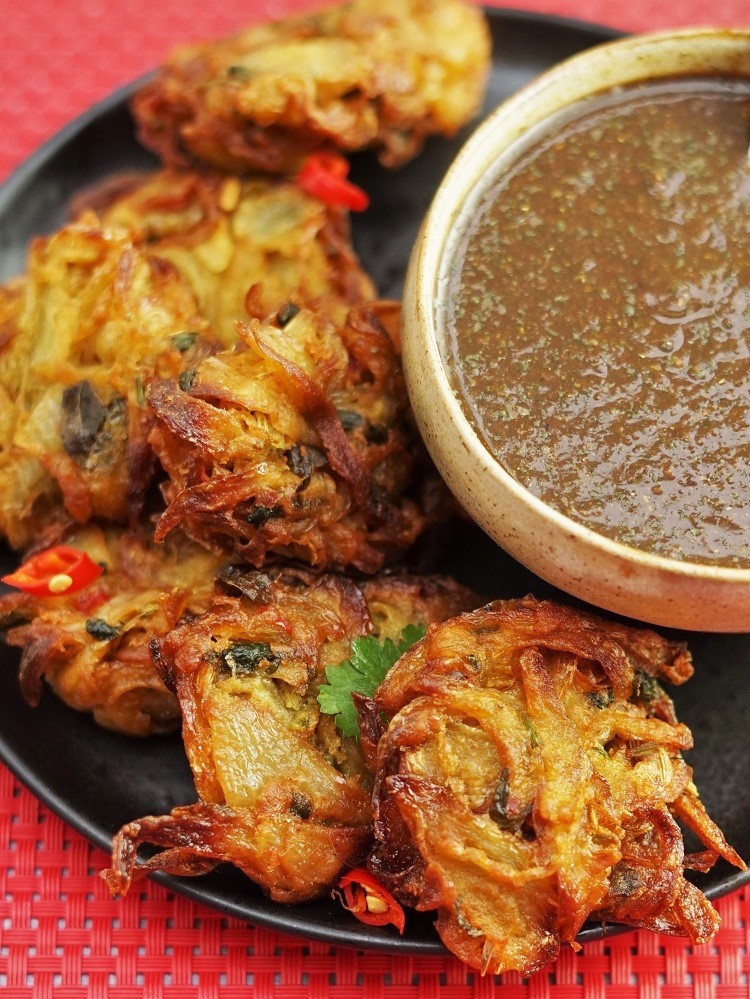
Jump to Recipe
Onion Bhaji are one of those Indian snacks I love to make at home. While most you’ll find in any decent Indian restaurant are pretty good, if you want some for snacking at home then I think you’re best to steer clear of those sold in supermarkets. I find that shop-bought are almost always stodgy. For my taste, there’s way too much batter in relation to onion. And the flavour? Bland and boring in my experience. I don’t make any claims to authenticity for my Onion Bhaji. But they’re light, crispy and full of flavour.
ONION BHAJI BATTER
Instead of swamping the onion with thick batter, I prefer just enough so that the onion is held together in moreish little fritters once fried.
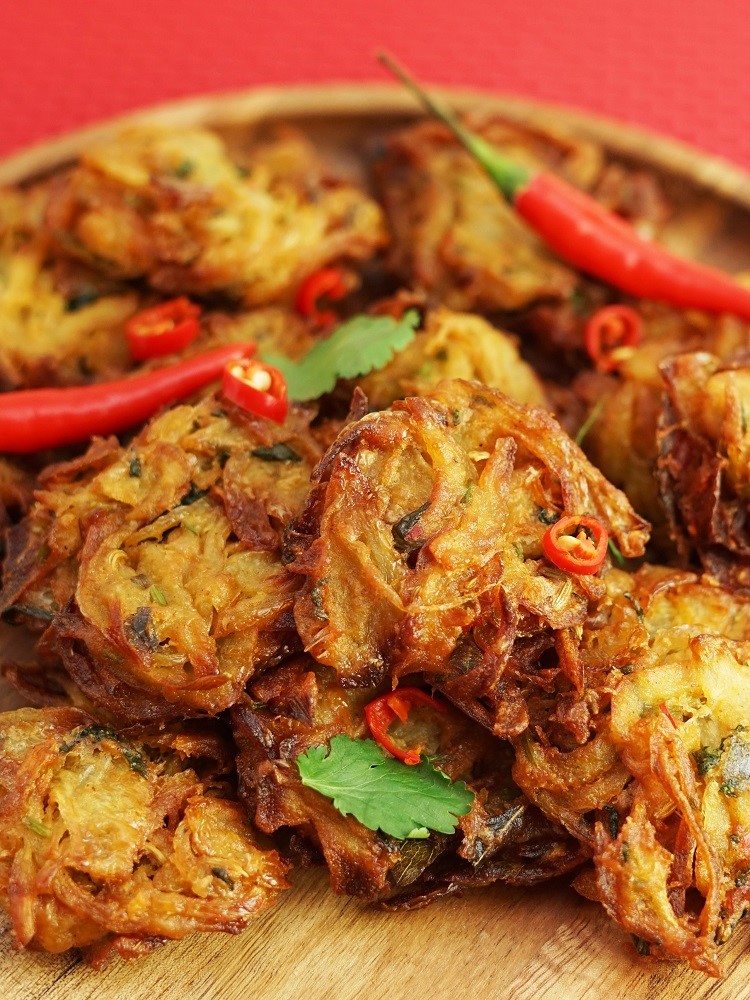
As with many Indian snacks, the basis of the batter is gram flour which is made from chickpeas. Gram flour is widely available these days and is pretty cheap for a large bag. I pay around £2 for 2 kilos.
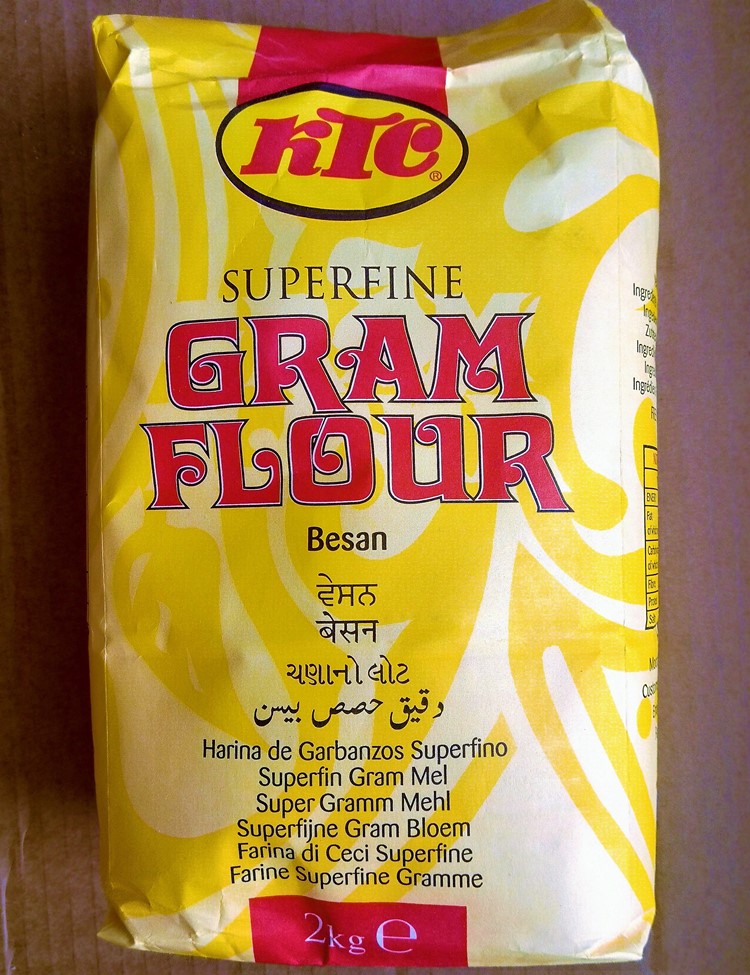
Unlike the Aloo Bonda recipe I posted recently where the veg (in that case, spiced potato balls) is dipped in a batter, for these bhaji you just mix some flour and water into the onions and flavourings.
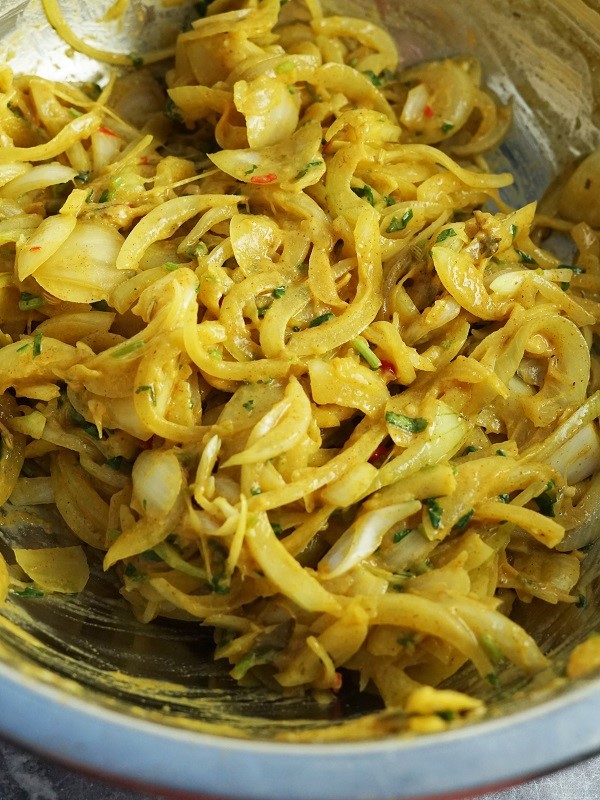
And talking of flavourings…
SPICES FOR ONION BHAJI
If you’ve a decently stocked spice cupboard, then you’ll probably have everything you need. After years of making them, I have my own particular favourite spices I like to include. But you can adapt the flavouring to whatever you prefer or what you happen to have.

I include: fresh ginger, garlic, chillies and coriander leaf plus curry leaves, fennel seeds, ground cumin, fenugreek, turmeric and paprika.
SHAPING & FRYING THE ONION BHAJI
To form the bhaji, with wet hands you take about a tablespoonful and lightly form it into a loose patty. Don’t compress it too much though, just enough so it hangs together.
I normally drop them straight into the hot, deep-frying oil as I form them. But here I put a few on a tray, just so you can see what the texture’s like:

I like to fry the Onion Bhaji a few at a time in a large wok. But use a deep fat fryer if you prefer.
If you’re not experienced at deep-frying, please tap here for a guide to doing it safely
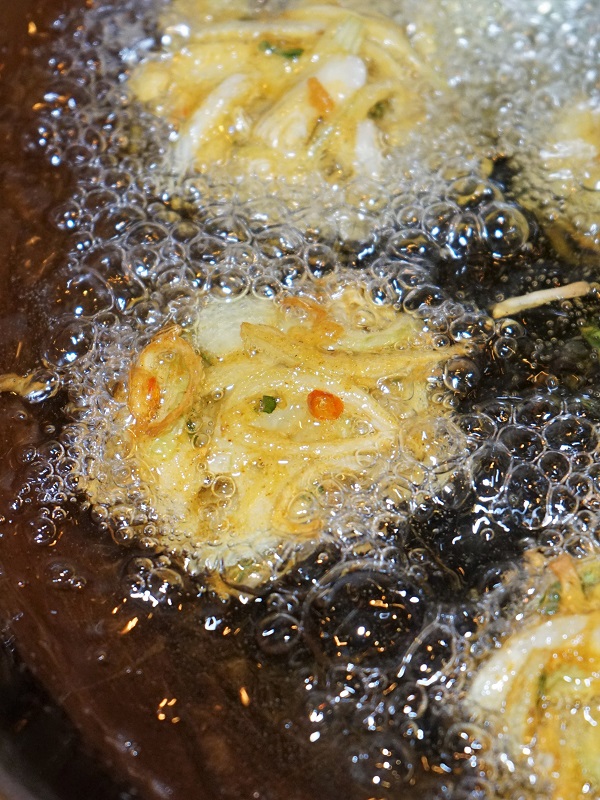
As the bhaji turn golden brown, transfer them to a kitchen towel-lined plate or tray while you use up the rest of the mixture.
Now here comes my tip for making sure your Obhaji are cooked all the way through with no horrible soggy centre: when cool enough to handle slightly tear open each one (taking care not to break them in half) and drop back into the hot oil. Sizzle for another minute then return to the kitchen towel.
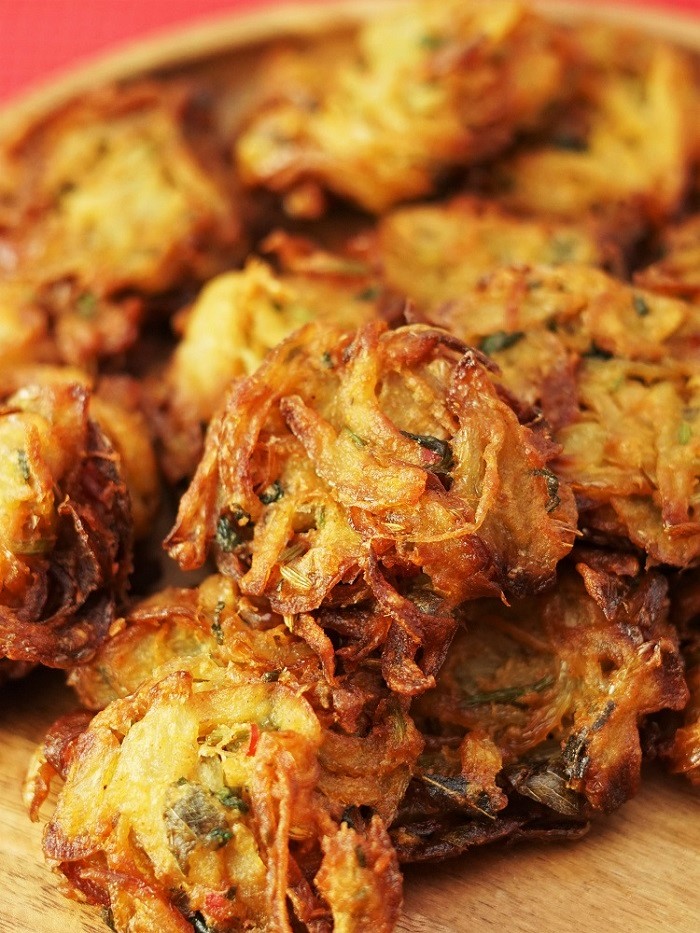
I don’t know where I read to do this, but I’ve since never made a batch of bhaji without this double frying. Result: Onion Bhaji perfectly cooked, all the way though.
SERVING ONION BHAJI
I love Onion Bhaji as part of an Indian thali tray with lots of other goodies: snacks like Aloo Bonda and Aubergine Fritters as well as curries, rice, yogurt, salads and chutneys.
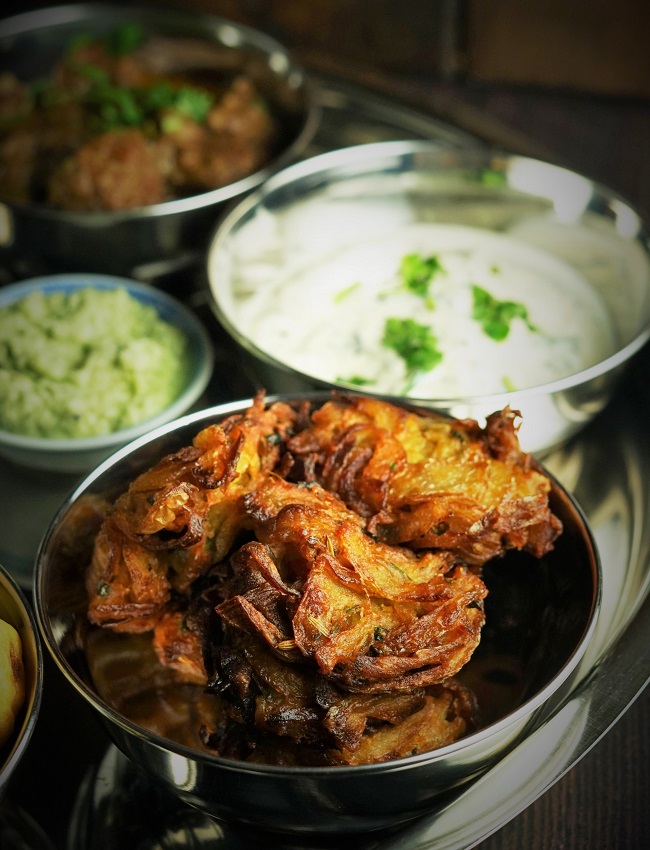
I think my Tamarind & Mint Chutney goes particularly well with Onion Bhaji. Its sweet and sour tang is a great contrast to the rich, spicy fritters.

The Onion Bhaji are fine to reheat in a low oven, but I also like them cold. Try them in packed lunches or on picnics with one or two chutneys or sauces for dipping.
What are your favourite Indian style snacks?
If you’ve made my Onion Bhaji I’d love to hear what you think, so please leave a comment in the section below.

Onion Bhaji
Indian spiced sliced onions fried in a light, gram flour batter. Serve as a snack, starter or as part of a larger, thali style meal.
Ingredients
- 500 g onions skinned, cut in half then sliced thinly
- 2 fresh chillies, green or red finely chopped, seeds in or out as preferred
- 10 g fresh ginger grated or finely chopped
- 5 cloves garlic grated or finely chopped
- 1 handful dried curry leaves lightly crumbled
- 1 small bunch fresh coriander roughly chopped
- 2 tsp fennel seeds
- 2 tsp ground cumin
- 1 tsp fenugreek powder
- 1 tsp paprika
- 1 tsp salt
- 0.5 tsp turmeric
- 60 g gram (chickpea) flour
- 2 tbsp water
- oil for deep frying see Recipe Notes for a guide to safe deep frying
Instructions
-
Put all the ingredients, except the water and the oil for deep frying, in a large bowl and mix together very well.
-
Stir in the water and mix so that everything has a light coating of batter. Add more water if needed.
Set aside.
-
Heat the oil to medium in a deep fat fryer, wok or other suitable pan.
-
With wet hands, take about a tablespoon of the mixture and form it into a loose patty. Don't squeeze it together too much.
Gently drop the patty into the hot oil then repeat with 3 or 4 more, but don't crowd the pan.
-
Cook until golden brown, then transfer to a kitchen towel-lined plate or tray.
Continue until all the mixture is used up.
-
Gently break each bhaji open, but take care not to break them in half. Taking a few at a time, drop them back into the hot oil to completely cook them through.
Transfer to clean paper towels or keep warm in a low oven while you cook the rest.
-
Best served warm with chutney for dipping.
Reheat in a moderate oven or can be eaten cold.
Can also be frozen once cold. Defrost before reheating as above.



Exactly as shown and very very tasty
Thank you!